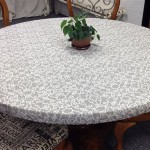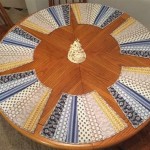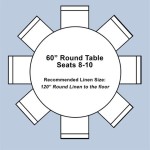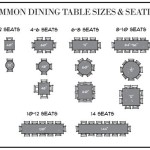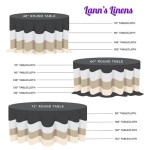Proper Use of Table Napkins in Schools and Colleges: English Class
Table manners constitute a crucial aspect of social etiquette, particularly in formal settings like school events, college dinners, and professional engagements. Within the realm of table manners, the proper use of a table napkin stands as a fundamental skill. Integrating the teaching of proper napkin etiquette into English class provides students with a practical application of language skills while simultaneously enhancing their understanding of social conventions. This article will detail the importance of table napkin usage, the various methods involved, and why its inclusion in English class curricula holds significant value.
The table napkin, often overlooked, serves several crucial functions. Primarily, it protects clothing from spills and crumbs. Beyond its practical purpose, it also acts as a signal to others at the table, indicating a pause or completion of eating. A carelessly placed or misused napkin can detract from the overall dining experience, while proper use demonstrates respect for the host and fellow diners. Therefore, understanding and executing appropriate napkin etiquette is essential for navigating various social and professional situations.
Furthermore, the ability to articulate and explain the nuances of table etiquette, including napkin usage, reinforces students’ communication skills. They learn to use precise language to describe procedures and social expectations, a skill applicable to numerous other contexts. By actively discussing and practicing napkin etiquette, students develop confidence in their ability to present themselves appropriately in different social settings.
Key Point 1: Placement and Initial Use of the Table Napkin
The initial placement of the table napkin is a critical step in demonstrating proper table manners. Upon being seated, the napkin should be unfolded and placed in the lap. This action signals the beginning of the meal and provides immediate protection against potential spills. The unfolding of the napkin should be discreet, avoiding any flamboyant gestures or excessive snapping.
The specific method of unfolding depends on the size of the napkin. For larger napkins, unfolding it halfway is generally sufficient. Smaller napkins may be unfolded completely. The objective is to provide adequate coverage without the napkin becoming cumbersome. Placing the unfolded napkin directly in the lap, rather than tucking it into the collar or bib, is the accepted practice in formal settings.
If leaving the table temporarily during the meal, the napkin should be placed on the chair. This indicates to the waitstaff that the diner intends to return. Never place a used napkin on the table while still eating, as this is considered impolite. The placement on the chair signals a temporary absence and prevents the table from appearing cluttered.
In situations where a serving plate or bowl is passed, the napkin remains in the lap. It is not used to assist in holding the plate or to clean up any accidental spills that may occur while passing food. The focus should remain on careful handling of the serving dishes to avoid any instances requiring the napkin for cleanup during the passing process.
Key Point 2: Using the Napkin During the Meal
Throughout the meal, the primary function of the napkin is to blot the mouth. This action should be performed discreetly and frequently, especially before taking a drink. Blotting, rather than wiping, prevents smearing and maintains a clean appearance. Using a designated area of the napkin for each blot helps to avoid spreading any staining.
The napkin is also used to dab fingers if they become soiled. Again, discretion is key. Avoid excessive wiping or cleaning that draws attention to the action. A gentle dab is typically sufficient to remove any minor soiling. For more significant spills, it is acceptable to excuse oneself and visit the restroom for a more thorough cleaning.
If a piece of food accidentally falls from the mouth onto the table, the napkin can be used to carefully retrieve it. This should be done subtly and without drawing undue attention to the mishap. Avoid using the napkin to chase food around the plate or to mop up large spills. In the case of a significant spill, politely request assistance from the waitstaff.
When encountering food items that require the use of fingers, such as asparagus or certain appetizers, the napkin serves to protect the hands. Use the napkin to hold the base of the food item, preventing grease or sauces from transferring to the fingers. This demonstrates consideration for hygiene and maintains a neat appearance throughout the meal.
Furthermore, the napkin can be used to signal that one is finished eating for a short break. Leave it on the chair that shows one is coming back to eat again. This is an unspoken signal to the waitstaff and other diners. When one is completely done eating, they should leave the napkin to the left side of the plate. This is an indicator that the diner is done and the table can be cleared.
Key Point 3: Proper Placement of the Napkin at the End of the Meal
At the conclusion of the meal, the napkin is placed on the table to the left of the plate. This signals to the waitstaff that one has finished eating and the table can be cleared. The napkin should be loosely folded, but not meticulously so. A casual fold indicates politeness without appearing overly fastidious.
Avoid refolding the napkin into its original shape. This can imply dissatisfaction with the meal or the cleanliness of the napkin. Simply placing it on the table to the left of the plate, in a slightly rumpled state, is the acceptable practice.
If there are any significant stains on the napkin, attempt to conceal them when placing it on the table. This is a gesture of consideration for the waitstaff and other diners. Fold the napkin in such a way that the stains are less visible, without drawing attention to the fact that they exist.
Never leave the napkin on the chair after finishing the meal. The chair indicates that the individual will return; indicating that the individual has left will call for the napkin to be placed on the table. Similarly, avoid crumpling the napkin into a ball or leaving it on the plate. These actions are considered impolite and detract from the overall dining experience.
Integrating the teaching of these napkin etiquette guidelines into the English class curriculum provides students with a valuable opportunity to learn and practice effective communication and social skills. The ability to articulate and demonstrate proper table manners enhances their confidence and preparedness for a variety of social and professional situations.
The use of role-playing exercises, where students simulate dining scenarios and practice using napkins correctly, can be a particularly effective teaching method. These exercises allow students to apply the knowledge they have gained in a practical and engaging way, reinforcing their understanding of the rules and expectations surrounding napkin etiquette.
Furthermore, incorporating discussions about the cultural variations in table manners can broaden students’ understanding of social etiquette. While the fundamental principles of napkin usage remain consistent across many cultures, there may be subtle differences in how they are applied. Exploring these variations can foster cultural awareness and sensitivity.
In conclusion, the proper use of table napkins is a critical component of social etiquette. Teaching these skills in English class provides students with a practical application of language skills and enhances their understanding of social conventions. By mastering napkin etiquette, students gain confidence in their ability to navigate various social and professional situations with grace and poise.
The inclusion of this instruction also serves as a valuable complement to other aspects of the English curriculum, such as public speaking and presentation skills. The ability to present oneself confidently and appropriately in social settings is directly related to the ability to communicate effectively in professional contexts. Therefore, teaching napkin etiquette in English class contributes to the overall development of well-rounded and socially adept individuals.
The integration of etiquette instruction within the English class environment emphasizes the practical applications of language and communication. Instead of solely focusing on grammar and literary analysis, students gain insight into how language is utilized in real-world scenarios to convey respect, navigate social interactions, and project a positive image. This holistic approach to language education aims to equip students with the skills and knowledge necessary to succeed both academically and socially.
Moreover, the emphasis on table manners, including napkin etiquette, promotes a sense of decorum and mutual respect within the classroom environment. By practicing these social skills, students learn to interact with one another in a more courteous and considerate manner. This fosters a positive and supportive learning atmosphere that is conducive to academic success and personal growth.
Finally, the inclusion of etiquette training in the English class curriculum can help to bridge the gap between the classroom and the professional world. Many employers seek candidates who possess not only technical skills but also strong interpersonal and social skills. By providing students with a foundation in etiquette, schools and colleges can better prepare them for success in their future careers.

Etiquipedia Etiquette And Napkin History
The Odd Napkin Etiquette Rule You Re Probably Breaking When Dining Out

Etiquipedia Etiquette And Napkin History
The One Surprising Etiquette Rule You Didn T Know Were Breaking

Napkin Etiquette

Laying Up Of Table For Various Meals And Menus Vrindawan University

Etiquipedia Etiquette And Napkin History
How To Set A Table For Dinner With Cloth Napkins Silverware Plates And Cups Quora

How To Set A Table For Tea Party With Pictures Wikihow

French Napkins David Lebovitz
Related Posts

